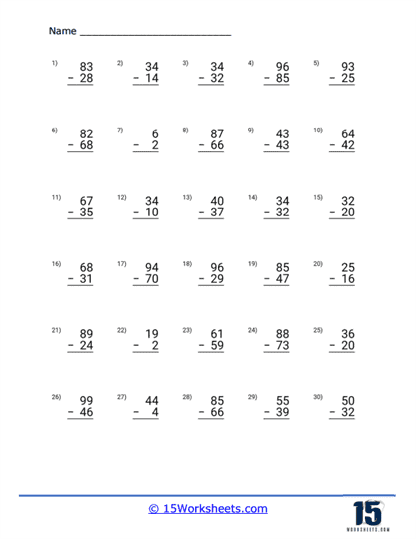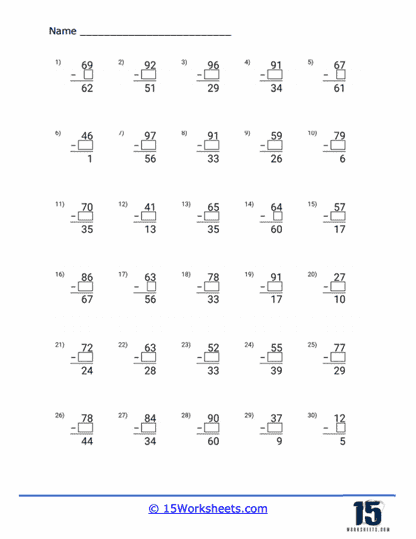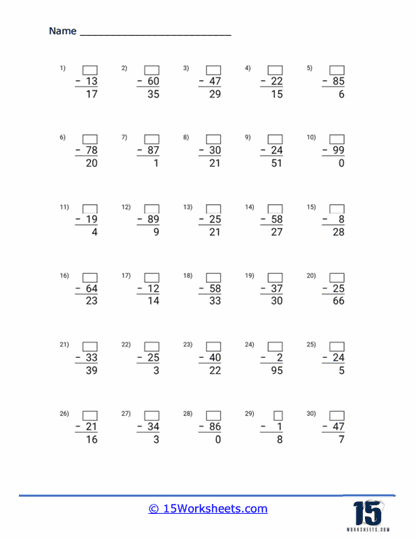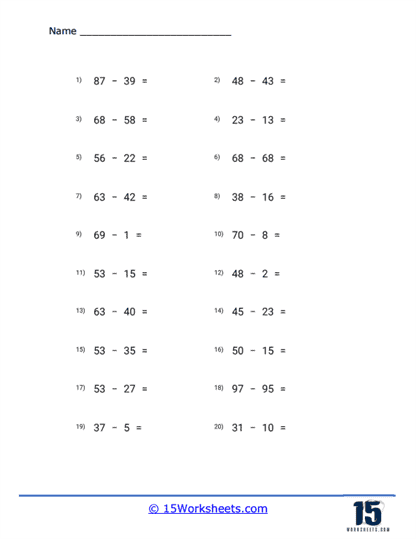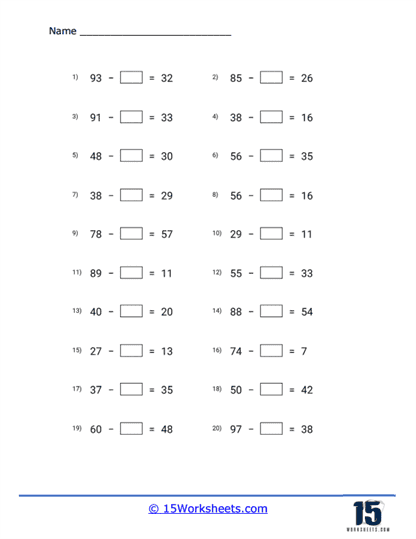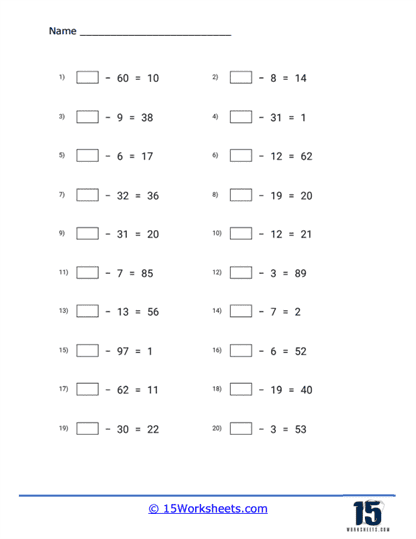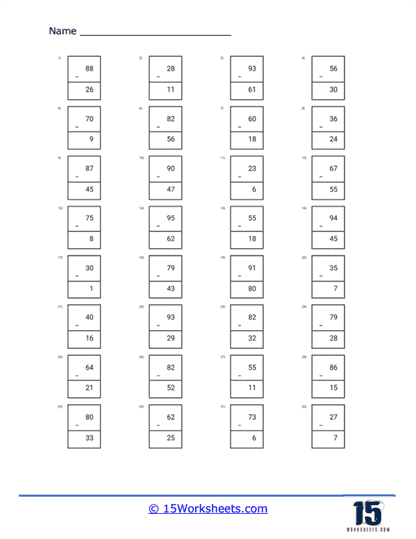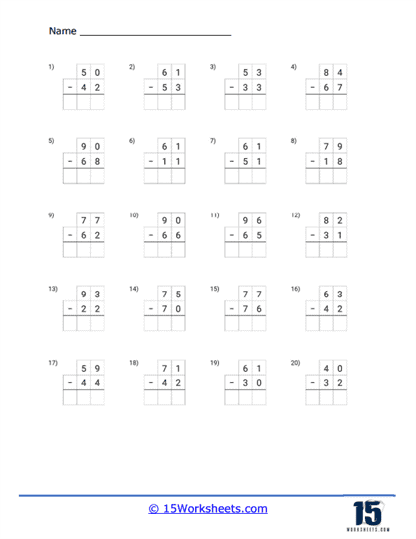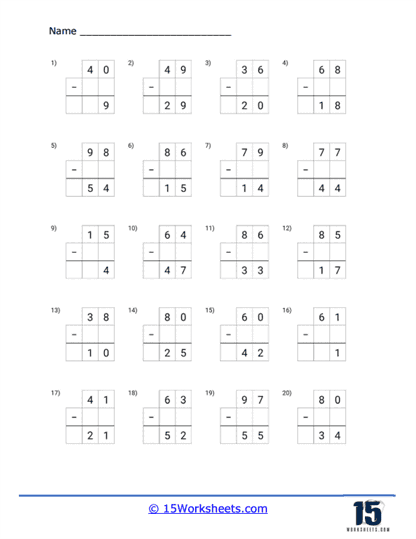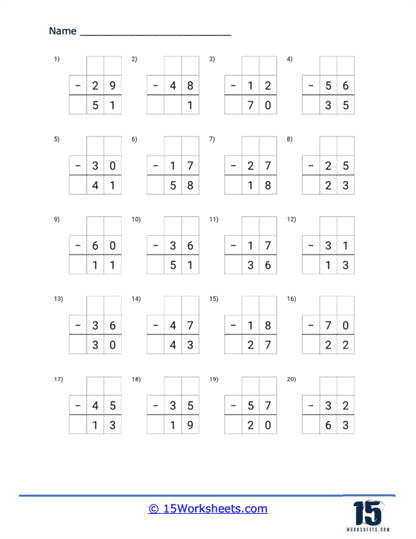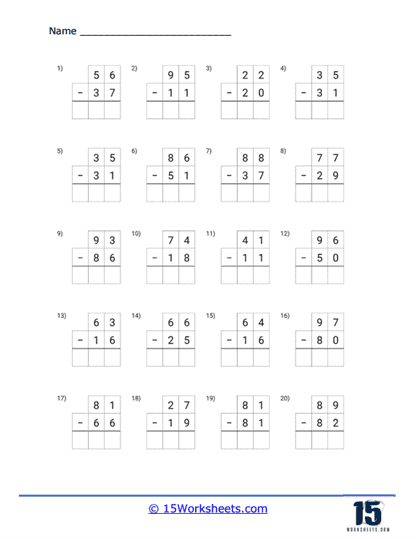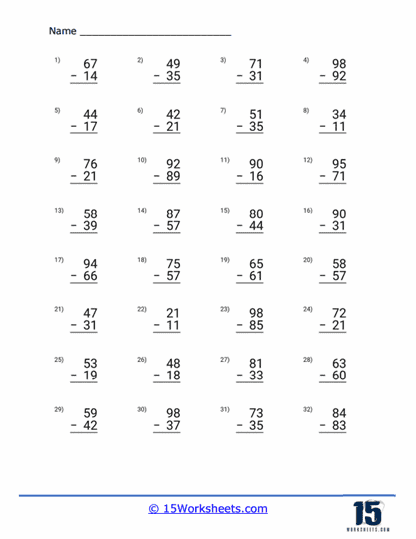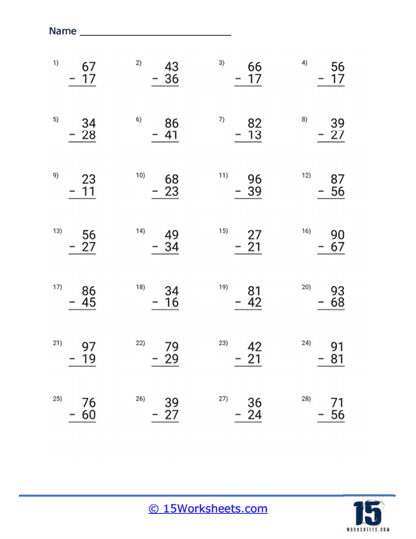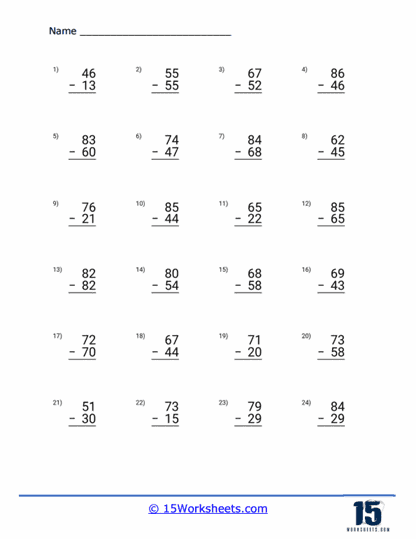2 Digit Subtraction Worksheets
About These 15 Worksheets
These worksheets are meant to help you master the basics of subtraction with larger numbers. Remember, subtraction is when you take one number away from another. It’s how we figure out the difference between two numbers. For instance, if you start with 50 apples and eat 20, subtraction helps you figure out that you have 30 apples left.
Subtracting two-digit numbers can sometimes seem tricky, especially when you have to “borrow” or “regroup.” These terms refer to the process of taking tens from one place value and moving it to the next lower place value. For example, if you’re trying to subtract 18 from 32, you’d have to “borrow” 1 from the tens place in 32, because 2 (in the ones place of 32) is smaller than 8. After borrowing, you’d have 12 in the ones place, which makes subtracting 8 easy.
These worksheets feature a variety of different problem types to give you a lot of practice with these skills. Some problems might be straightforward, like 45 – 23, and others might require borrowing, like 62 – 38. These worksheets help you build confidence and speed in solving subtraction problems, and they prepare you for subtracting even larger numbers in the future.
Remember, the aim of these worksheets is to help you practice and improve your skills. It’s okay to make mistakes – in fact, mistakes are often how we learn best. So, grab your pencil, keep a positive attitude!
How to Perform This Type of Subtraction
To subtract two-digit numbers, follow these steps:
Step 1: Place the two numbers vertically with the ones digits aligned and the tens digits aligned.
For example, let’s subtract 47 from 82. When we state it in a number sentence, it appears as:
82
– 47
Step 2: Start from the right-most column (ones column) and subtract the ones digit of the second number from the ones digit of the first number. Write the result below the line.
82
– 47
5
Step 3: If the ones digit of the first number is smaller than the ones digit of the second number, you may need to “borrow” from the tens digit.
In our example, 2 is smaller than 7, so we borrow 1 from the tens digit of the first number, making it 7. We then add 10 to the ones digit of the first number, making it 17.
72
– 47
5
Step 4: Subtract the tens digit of the second number from the tens digit of the first number, along with the borrowed value (if any). Write the result below the line.
In our example, 7 (from 17) minus 4 equals 3.
72
– 47
35
Step 5: The result is the difference of the two numbers.
Therefore, 82 minus 47 equals 35.

